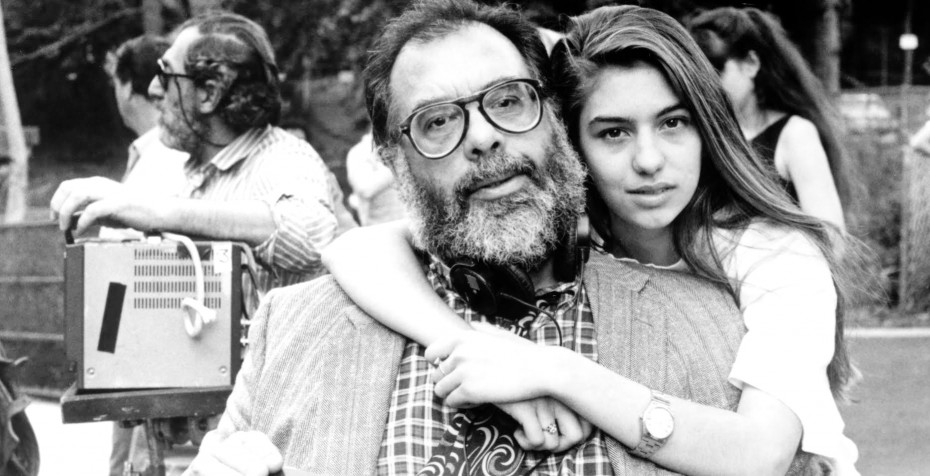A unique documentary exhibition, “Italian American Cinema: From Capra to the Coppolas”, is currently on display at the Museo Italo-Americano, until March 6, 2016. The exhibition is surely an opportunity to better understand the contributions made by Italian-Americans to the national cinema and culture. Film scholar Joseph McBride, who is the curator of the exhibition, focused on the positive effect some directors had on the old stereotypes about Italian Americans. As soon as Italian Americans have been portrayed more realistically and with more range and complexity, the growing license to deal with ethnic subject matter and the increasing violence of American movies have in some ways made gangster stereotypes more virulent in both films and television. Another important aspect relates to the themes usually covered by Italian American filmmakers from the early 1900s until today: lot of space is usually given to the importance of family and community; to the problem of immigration and assimilation; to the celebratory use of comedy and music.
How did the Italian heritage influence these directors?
That’s hard to generalize, as are most questions about ethnicity. People are all different. Some embrace their ethnic backgrounds, and some run away from them. Italian culture is very rich, of course, and its great traditions of painting, architecture, music, and literature, among others, can’t help but be passed down to Italian American filmmakers of all kinds. Film is a blend of all other art forms. The filmmakers who started earliest had to deal with more discrimination and marginalization, so some, such as Frank Capra, tried to assimilate more than people tend to do today. Capra identified with the WASP majority and cast WASP leading men as surrogates. Later directors were able to embrace their ethnicity and deal with it more directly onscreen, as a result of the growing assimilation of Italian Americans into the American mainstream over the years and the increasing pride felt by their group and other groups in their ethnicities.
Frank Capra was one of the first directors who tried to not put his ethnicity in the forefront. Do you consider it the key of his success?
Capra was successful in the 1930s because of his great comedic skills, his ability to tap into popular sentiment, and a certain sympathy he had for ordinary Americans, even if that sympathy was mixed with fear about the masses becoming a mob and joining forces against the establishment. Capra personally was a Republican with conservative, establishment values, but he seemed more populist or more complex in his work. That is partly due to his writers, who tended to be more liberal than he was. He and his writers (notably Robert Riskin) captured the Zeigeist of the Depression era with a series of films that were inspiring while also expressing many of the anxieties of the time.
How did these directors’ work help overcome the stereotype belonging to the first Italian immigrants to America?
Directors such as Capra and Vincente Minnelli made “all-American” films that seemed to transcend ethnic categorization during the Golden Age. They stayed away from most of the stereotypes that beset Italian Americans onscreen when others portrayed that group largely as criminals or buffoons. The Golden Age giants and later directors also made films in various genres that did not limit them to narrow categories. More recent directors such as Francis Ford Coppola and Martin Scorsese have also made a wide variety of films; when they deal with Italian and Italian American gangsters, sometimes controversially, they are able to probe deeply into the fabric of the immigrant experience and the nature of family life in changing times in America.
What do you think current Italian filmmakers can learn from these Italian American directors?
I am not sure what Italian filmmakers can learn from them unless they want to come and work here and follow their examples – other than in the way any good director can learn from his or her peer in another country. Cinema is international, and there is much cross-fertilization. American cinema has had a profound impact around the world, and Italian American directors from Capra to the Coppolas are respected worldwide.
Which kind of feelings and impressions does this exhibit want to generate to visitors?
We want to celebrate the rich contributions Italian American filmmakers – directors, actors, writers, producers, and others – have long made and continue to make to our national culture. We also want to show how these many talented filmmakers have dealt with ethnic issues and helped make their ethnicity more mainstream while still respecting their cultural identity and interpreting it for other Americans as well as their own people. The issues these filmmakers and we are dealing with are complex, and we hope to stimulate further thought on the subject and help people probe behind the sometimes shallow categorizations imposed by our culture and the media. These Italian American artists have brought many varied gifts to our nation, and we are expressing our gratitude.































